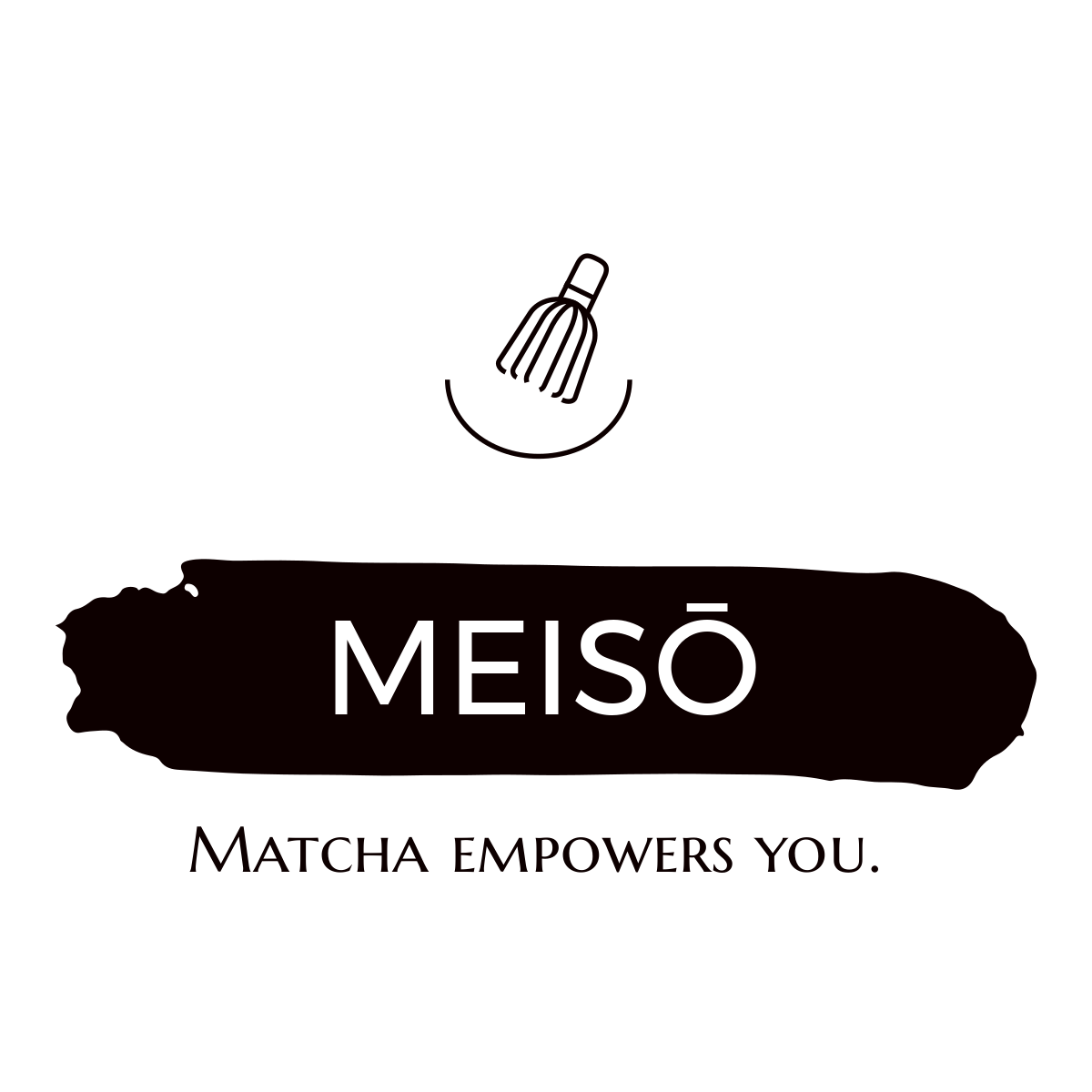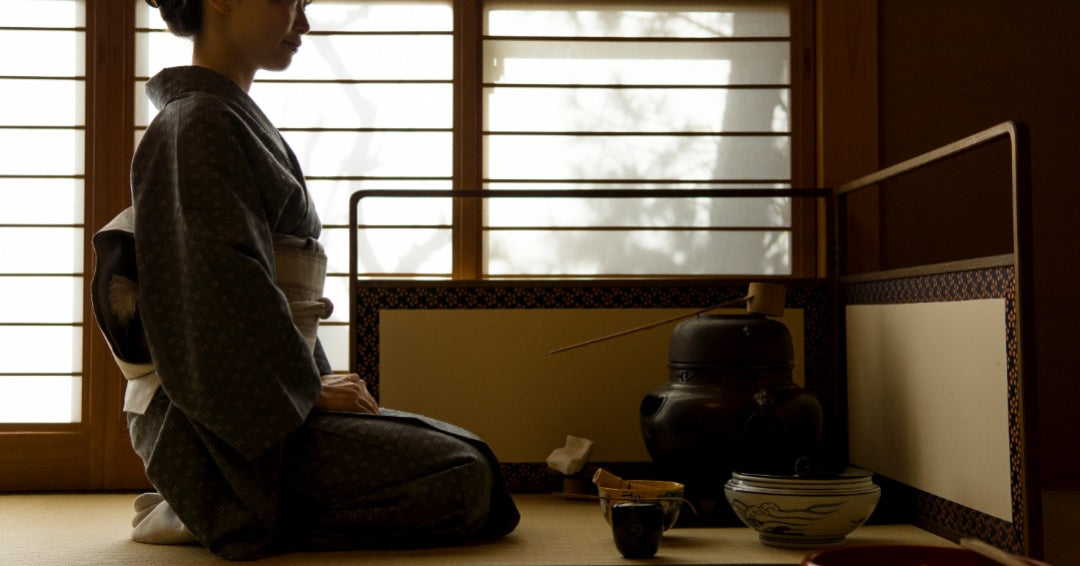THE WAY OF TEA
The Japanese tea ceremony, also known as "the way of tea" -chadō-茶道-, is a cultural tradition dating back to the 9th century that involves the ritual preparation and serving of Matcha. It is a profound and symbolic art form that embodies harmony, respect, purity and tranquility of Japanese culture. The tea ceremony is not just about drinking Matcha, but rather a holistic experience that involves all the senses and requires concentration, mindfulness and a sense of presence. It is a way to cultivate and nurture the mind, body and spirit and to connect with others in a meaningful and authentic way. The tea ceremony requires the full participation and attention of guests, and involves a series of steps and rituals imbued with meaning and symbolism. The Matcha itself is prepared with precision and respect.
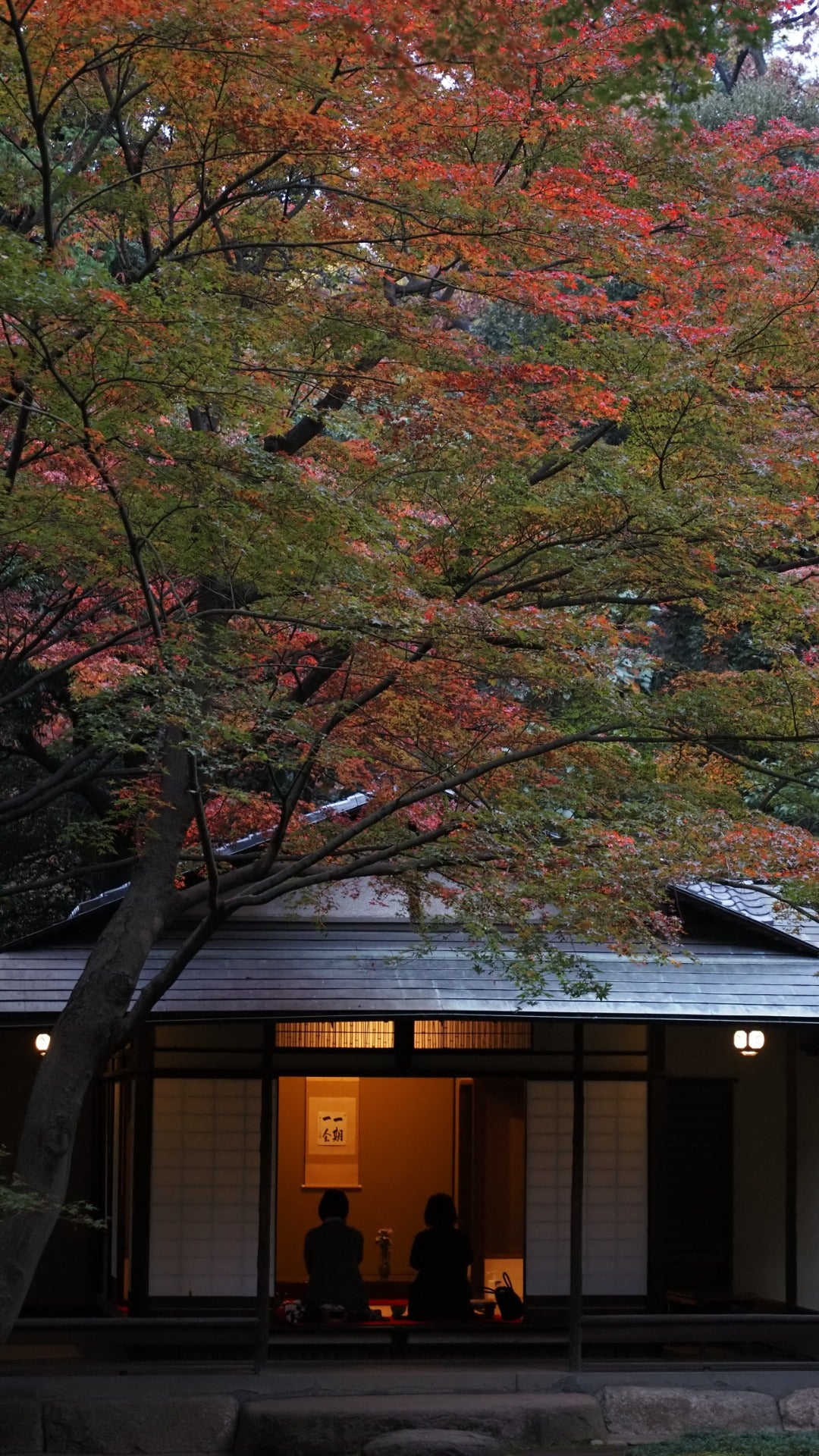
THE TEA ROOM
The tea room -chashitsu-茶室- is an important part of the tea ceremony -chanoyu-茶の湯-, as it serves as a secluded and quiet place where participants can focus on the ritual and aesthetics of the ceremony. The tea room is usually a small, simple building with a thatched roof and sliding doors. This small size is intentional, as it creates a sense of intimacy and closeness between participants. It is usually located in a garden or courtyard and is designed to harmonize with the natural surroundings. The tea room is usually equipped with a -tokonoma-床の間-, a niche set into the wall. A hanging scroll or flower arrangement is hung in it, forming the focal point of the tea room. The hanging scroll is usually a piece of calligraphy or a painting that reflects the season or theme of the tea ceremony. The floral arrangement is usually a simple, asymmetrical arrangement of seasonal flowers and branches. The tea room is usually entered through a small door or gate, symbolizing the transition from the outside world to the peaceful and contemplative atmosphere of the tea room. Once participants enter the room, they must remove their shoes and sit on tatami mats. The host of the tea ceremony then prepares and serves the tea with a series of precise and ritualized movements.
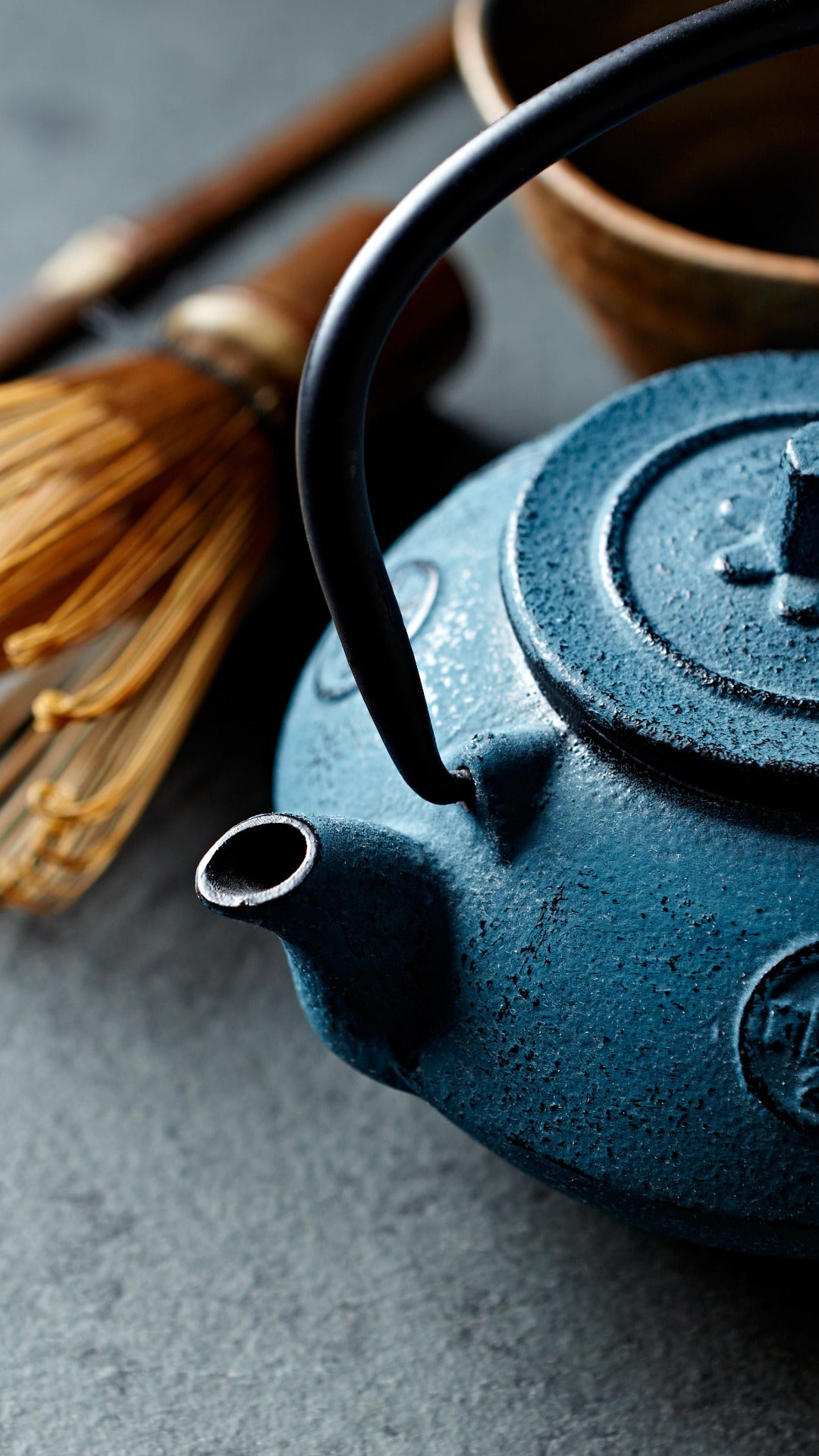
THE UTENSILS
One of the most important tea utensils in the Japanese tea ceremony is the tea bowl, also called -chawan-茶碗-. These bowls are handmade and can be crafted from a variety of materials, including ceramic, porcelain and lacquer. The shape and design of the tea bowl is chosen to match the season and theme of the tea ceremony. These bowls are often made by skilled artisans and can be very ornate and decorative. However, in the tea ceremony, the emphasis is on the simplicity and purity of the bowl rather than its ornamentation. Another important tea utensil is the teaspoon or -chashaku-茶杓-, a small tool used to measure out the matcha powder. These scoops are usually handmade of bamboo or wood and have a curved, spoon-like shape. They are also used to pour the Matcha into the tea bowl. Other tea utensils include the whisk -chasen-茶筅-, which is used to whisk the Matcha with hot water until frothy. It is usually made by hand from bamboo and has a series of thin, flexible tines. The tea whisk is a delicate utensil and requires special care and maintenance. The tea cloth -chakin-茶巾- is a small linen or silk cloth used to wipe the tea bowl before and after the tea ceremony to remove Matcha residue. In addition to these utensils, other items used in the Japanese tea ceremony include the tea container -natsume-棗- for storing the Matcha, the water ladle -hishaku-柄杓- for transfering hot water from the -chagama-茶釜-, a traditional cast iron kettle, to the tea bowl. All of these tea utensils are an essential part of the experience, so each utensil has its own purpose and importance in the ceremony.
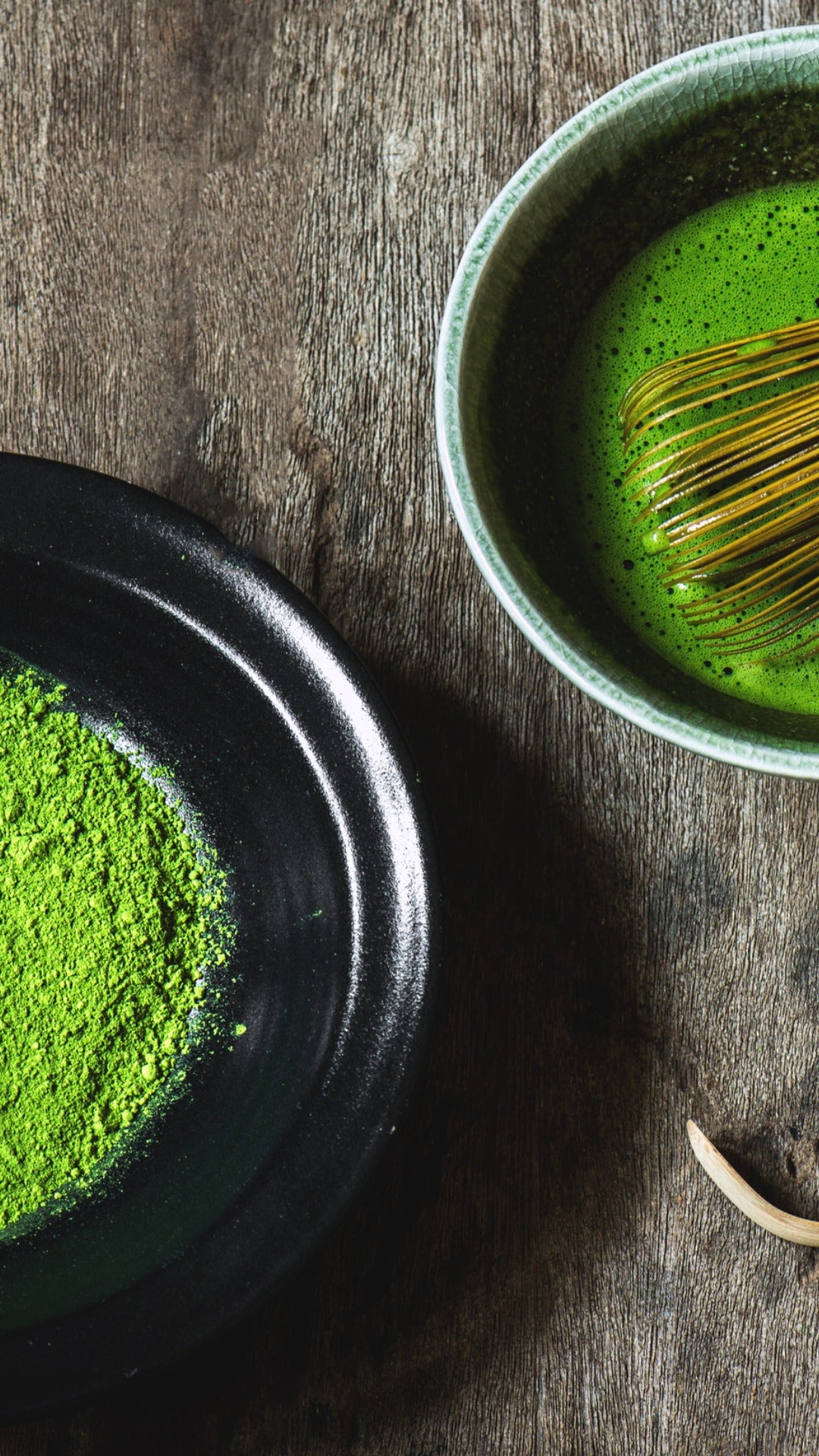
THE TEA
-matcha-抹茶- "ground tea" is the tea used in a traditional tea ceremony . It is a type of green tea that is grown and processed differently than other types of green tea. The tea leaves are covered with shade cloths for several weeks before harvesting, which causes the leaves to produce more chlorophyll and theanine, resulting in a bright green color and a unique umami flavor. The tea leaves are then hand-picked, steamed and dried before being ground into a fine powder using stone mills. During the tea ceremony, the Matcha is stirred with hot water to create a frothy and smooth tea that is enjoyed for its flavor and health benefits. The tea ceremony itself is an important aspect of Japanese culture, where each step is performed with care and intention, symbolizing harmony, respect and purity. Drinking Matcha as part of a tea ceremony is not only a delicious experience, but also a spiritual and cultural one.
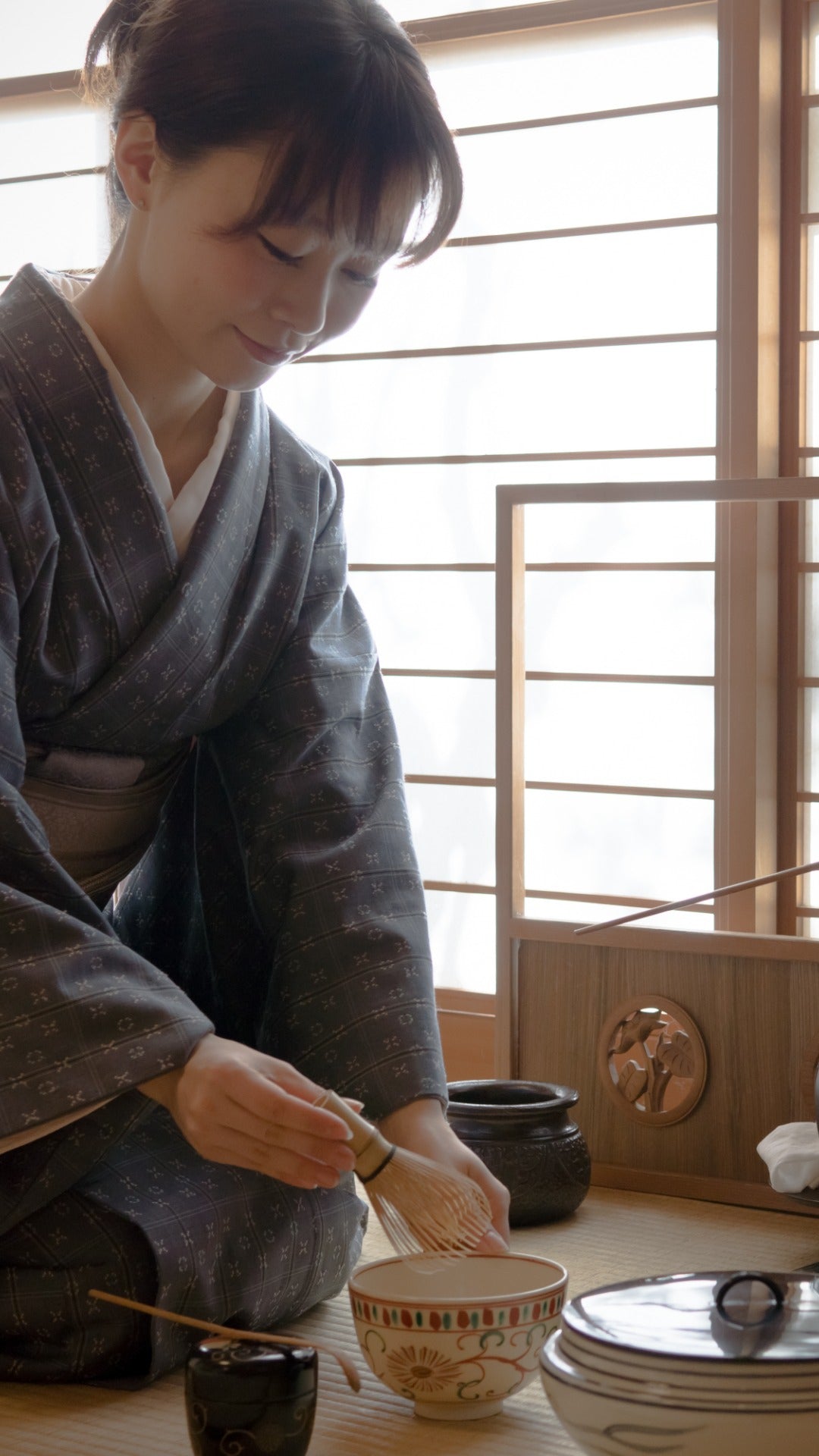
THE RITUAL
The ritual of the tea ceremony consists of a series of steps followed in the preparation and serving of tea. These steps may vary depending on the school, tradition or occasion, but generally begin with the purification of the mind and body. This is usually done by a ritual hand washing at a stone basin called -chōzubachi-手水鉢- before entering the tea room. When the guests -kyaku-客- reach the tea room, they are asked to enter, usually without shoes, and are greeted by the host -teishu-亭主-. They bow and exchange formal greetings. Then they take their seats in a certain order, with the most honored guest -shoukyaku-正客- sitting closest to the host. Then the host presents the guests with a small sweet treat called -wagashi-和菓子-. This is usually a small sweet that is served before the Matcha is prepared. The wagashi is meant to cleanse the palate and prepare the guests for the Matcha. The host then begins preparing the Matcha by first cleaning the precisely arranged tea utensils such as the tea caddy, bamboo scoop and tea bowl with a special tea cloth. Then, the Matcha powder is carefully measured out with the bamboo spoon and placed in the Matcha bowl. Hot water from a kettle is then added to the bowl and stirred with a special bamboo whisk until the Matcha is smooth and frothy. The host then begins serving the Matcha to the guests by holding the bowl with both hands and bowing, starting with the most honored guest. Guests are expected to receive the Matcha bowl in the same manner, appreciating the color and froth of the tea and gently rotating the bowl with their right hand before taking a sip. The bowl is then passed in the same way to the next guest, who also takes a sip until it reaches the last guest, who in turn returns it to the host. This is to symbolize the sharing of joy and the bond of friendship. Afterwards, the host cleans the tea bowl and prepares the next serving of Matcha. When the guests have finished drinking the tea, the host cleans the bowl and utensils with hot water and the special tea cloth. He then hands the utensils used for the tea ceremony to the guests, who take a moment to appreciate the beauty and artistry of the utensils before returning them to the host. The tea ceremony ends with a formal bow and a final exchange of greetings between host and guests.
THE HOME CEREMONY
The Japanese tea ceremony is a complex and nuanced activity that requires years of training and practice to master. It is not only about preparing and serving tea, but also about creating a peaceful, harmonious atmosphere and building relationships with others through the shared experience of ceremony. Furthermore, it is a unique and beautiful aspect of Japanese culture that is appreciated by many people around the world. The tea ceremony is not only a formal event, but can also be a casual, relaxed activity enjoyed by friends and family members in an informal setting. In this case, the ceremony can be less formal and involve less traditional tea utensils and rituals. So enjoy a cup of Matcha with your loved ones in a casual atmosphere and experience this beautiful aspect of Japanese culture.
